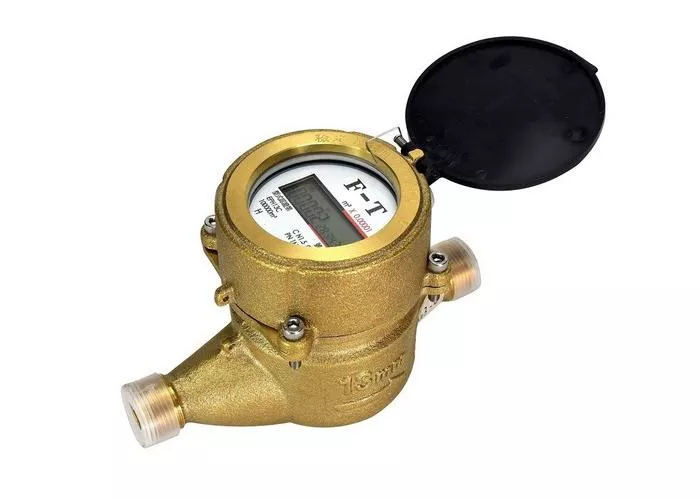Rotameters, widely known as Variable Area Flowmeters, are popular instruments used to measure the flow rate of liquids and gases. Their design simplicity, reliability, and ease of maintenance have made them a staple in various industrial and laboratory applications. However, one frequently asked question among engineers and technicians is whether a rotameter can measure vacuum conditions effectively. In other words, can a rotameter provide accurate readings when dealing with flows under sub-atmospheric pressures? This article aims to deliver a detailed and factual explanation regarding the use of rotameters in vacuum measurement scenarios, exploring their principles, limitations, and alternatives where appropriate.
What Is a Rotameter and How Does It Work?
A rotameter operates on the variable area principle. It consists primarily of a tapered tube and a float. As fluid flows upward through the tube, the float rises until the area between the float and the tube wall allows a flow rate corresponding to the fluid velocity. The float’s position is usually calibrated to indicate the volumetric flow rate directly. This design depends heavily on the fluid density, viscosity, and pressure conditions for accurate measurements.
Because the float position results from the equilibrium of gravitational and drag forces, rotameters are inherently sensitive to changes in fluid properties. This is a critical point when considering whether they can function properly under vacuum conditions.
Rotameter Functionality in Vacuum Conditions
Vacuum implies that the pressure in the system is below atmospheric pressure, sometimes significantly so. This pressure drop affects the fluid density and flow characteristics inside the rotameter tube. Since rotameters are typically calibrated for flow at atmospheric pressure, deviations from this baseline pressure alter the float’s behavior and cause inaccurate readings.
In vacuum conditions, the lower fluid density means that the float will experience less drag force for the same volumetric flow rate. Consequently, the float position will shift in a way that does not correspond to the actual flow rate unless compensated by calibration or correction factors. Without adjustments, a standard rotameter will generally underestimate the flow rate in vacuum environments.
Key Limitations When Using Rotameters Under Vacuum
- Calibration Sensitivity: Rotameters must be specifically calibrated for the pressure and fluid type. Off-the-shelf rotameters calibrated for atmospheric conditions will not yield accurate measurements under vacuum.
- Fluid Properties Variation: Changes in fluid viscosity and density due to low pressure significantly affect the float’s equilibrium position.
- Mechanical Constraints: Some rotameters are not constructed to withstand external atmospheric pressure pushing against a vacuum inside the tube, risking structural damage or deformation.
- Measurement Range Limitations: The effective measuring range may be severely reduced under vacuum because of altered flow dynamics.
Design Adaptations for Rotameters in Vacuum Applications
To enable rotameters to measure flows accurately under vacuum, manufacturers have developed specialized designs that include stronger materials, altered float shapes, and pressure-balanced tubes. These modifications allow the rotameter to maintain structural integrity and compensate for fluid property variations.
Moreover, manufacturers provide vacuum-calibrated scales or electronic output sensors that translate float position into corrected flow rates considering the vacuum condition. Despite these enhancements, rotameters remain less common for vacuum measurements compared to other more suitable instruments.
Alternatives to Rotameters for Vacuum Flow Measurement
Given the limitations of rotameters in vacuum conditions, other types of flow meters are often recommended. For example, Ultrasonic Flowmeters and Coriolis Flowmeters can provide accurate readings independent of pressure changes and fluid density variations. These technologies rely on different physical principles that are less affected by vacuum conditions.
Additionally, in some vacuum applications, differential pressure flowmeters, thermal mass flowmeters, or even specially designed pressure gauges combined with flow calculations may be preferred for their reliability and accuracy.
Conclusion
In summary, a standard rotameter is generally not suitable for measuring vacuum flows without proper calibration, design modification, and careful consideration of fluid properties. While rotameters excel in measuring liquid and gas flows at or near atmospheric pressure, their performance degrades in vacuum due to changes in fluid density and pressure-related mechanical constraints.
Engineers must evaluate the specific vacuum range, fluid characteristics, and accuracy requirements before selecting a rotameter for such applications. In many cases, alternative flow measurement technologies offer more reliable and consistent results under vacuum conditions.
For those interested in the broader context of flow measurement devices, exploring related flow meter technologies is highly recommended. Understanding the fundamentals and operating principles of different meters ensures the right instrument is selected for each unique application.
FAQs
1. What happens to a rotameter float in vacuum conditions?
In vacuum conditions, the fluid density decreases, resulting in reduced drag force on the float. This causes the float to rise higher than it would at atmospheric pressure for the same flow rate, leading to inaccurate readings unless the device is recalibrated for vacuum.
2. Can I use a standard rotameter without modification to measure vacuum?
No. A standard rotameter is not designed or calibrated for vacuum conditions. Using it without modification will typically produce erroneous flow measurements and could risk mechanical damage to the instrument.
3. Are there rotameters specifically made for vacuum measurement?
Yes, some manufacturers offer rotameters specially designed and calibrated for vacuum or low-pressure environments. These units feature reinforced tubes and float designs as well as pressure-compensated scales.
4. What are better alternatives to rotameters for measuring vacuum flow?
Alternatives include Ultrasonic Flowmeters, Coriolis Flowmeters, and thermal mass flow meters, which are less affected by pressure changes and fluid density variations, making them more reliable for vacuum applications.
5. How important is fluid density when measuring flow with a rotameter?
Fluid density is crucial because it directly affects the drag force on the float. Variations in density, especially under vacuum, impact the float position and thus the accuracy of the flow measurement.

